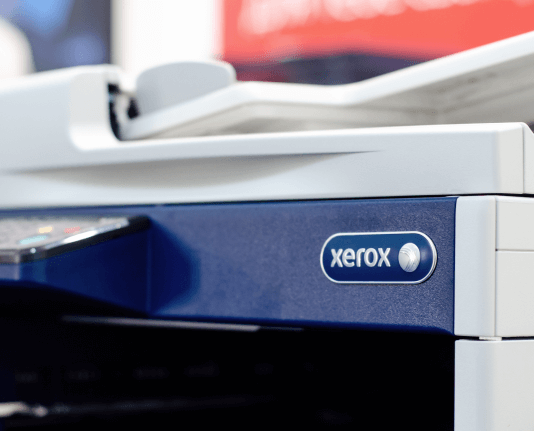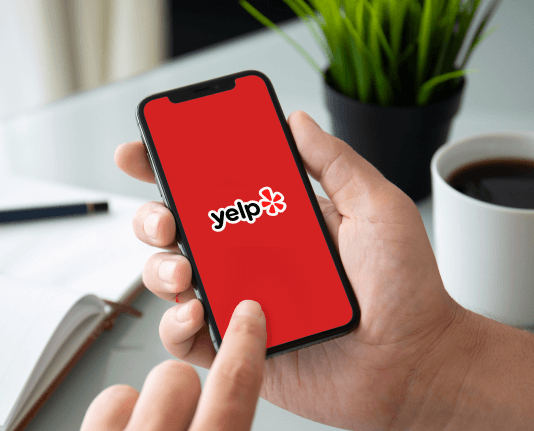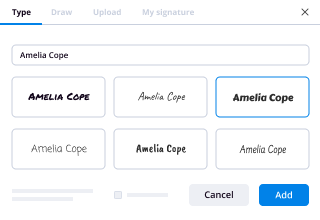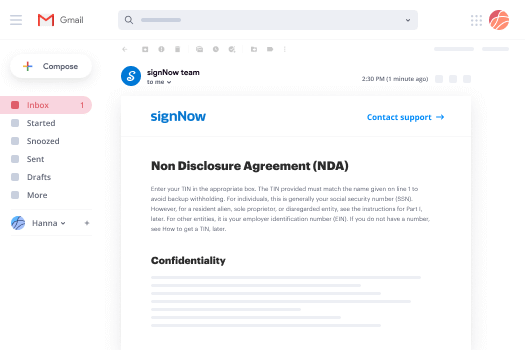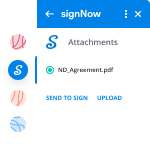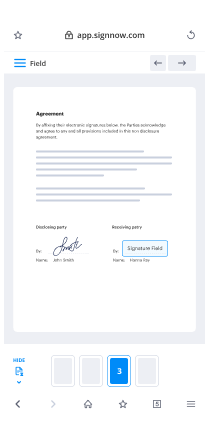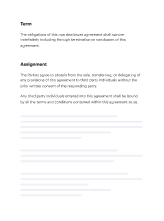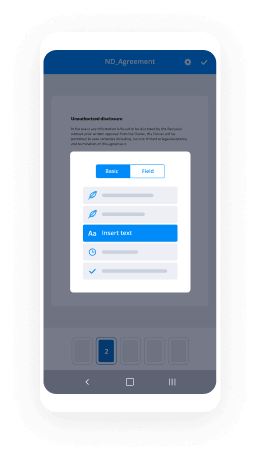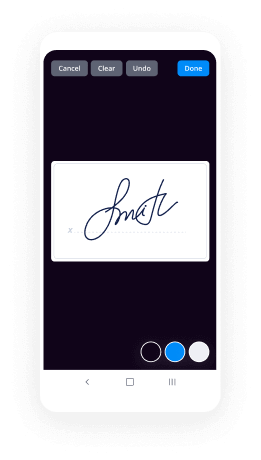Can I Set Up Sign in DropBox
Contact Sales
Make the most out of your eSignature workflows with airSlate SignNow
Extensive suite of eSignature tools
Robust integration and API capabilities
Advanced security and compliance
Various collaboration tools
Enjoyable and stress-free signing experience
Extensive support
Keep your eSignature workflows on track
Our user reviews speak for themselves






Integrating Dropbox with airSlate SignNow for effortless document management
Dropbox serves as an efficient platform for file storage and sharing, and when combined with airSlate SignNow, it improves your document signing workflow. airSlate SignNow delivers a thorough solution for organizations aiming to optimize their eSignature processes, making it straightforward to distribute, sign, and oversee documents proficiently. In this manual, we will investigate the procedures to utilize airSlate SignNow proficiently.
Procedures to utilize Dropbox with airSlate SignNow
- Launch your web browser and navigate to the airSlate SignNow site.
- Set up a complimentary trial account or log into your current account.
- Employ the Dropbox integration to upload the document you want to sign or forward for signatures.
- If you intend to use this document in the future, transform it into a reusable template.
- Review your uploaded document and make necessary adjustments, such as inserting fillable fields or adding particular details.
- Sign your document and designate signature areas for all necessary recipients.
- Select 'Continue' to adjust settings and send out your eSignature invitation.
By adhering to these procedures, you can optimize the advantages of utilizing airSlate SignNow in conjunction with Dropbox, ensuring a more efficient document management system. This service offers an excellent return on investment with its diverse features and intuitive interface, specifically designed for small to medium-sized businesses.
Eager to improve your document signing journey? Initiate your free trial with airSlate SignNow today and revolutionize the way you handle and sign documents!
How it works
Rate dropbox sign in
-
Best ROI. Our customers achieve an average 7x ROI within the first six months.
-
Scales with your use cases. From SMBs to mid-market, airSlate SignNow delivers results for businesses of all sizes.
-
Intuitive UI and API. Sign and send documents from your apps in minutes.
A smarter way to work: —how to industry sign banking integrate
FAQs
-
How does airSlate SignNow integrate with Dropbox?
airSlate SignNow offers seamless integration with Dropbox, allowing users to easily access and store signed documents directly in their Dropbox account. This integration simplifies document management by ensuring that all your eSigned files are organized and readily available in one secure location. By connecting Dropbox with airSlate SignNow, you can enhance your workflow efficiency.
-
What are the pricing options for airSlate SignNow when using Dropbox?
airSlate SignNow provides flexible pricing plans that cater to different business needs, even if you are utilizing Dropbox for document storage. You can choose from various subscription tiers that fit your budget and the volume of documents you need to sign. Additionally, airSlate SignNow often offers free trials, allowing you to explore the features before committing.
-
Can I eSign documents stored in Dropbox using airSlate SignNow?
Yes, you can easily eSign documents stored in your Dropbox account using airSlate SignNow. The integration allows you to import documents directly from Dropbox, sign them online, and then save the completed files back to your Dropbox. This feature streamlines the signing process and minimizes the hassle of switching between platforms.
-
What features does airSlate SignNow offer that enhance Dropbox usability?
airSlate SignNow enhances Dropbox usability by providing features such as real-time collaboration on documents, customizable templates, and automated workflows. These features help streamline the signing process and improve productivity. By using airSlate SignNow with Dropbox, you can efficiently manage document workflows with ease.
-
Is airSlate SignNow secure for handling Dropbox documents?
Absolutely! airSlate SignNow prioritizes security and compliance, ensuring that all documents signed through the platform, including those stored in Dropbox, are protected with advanced encryption and authentication measures. Your sensitive information remains confidential and safe from unauthorized access.
-
Can I track document status when using airSlate SignNow with Dropbox?
Yes, airSlate SignNow provides comprehensive tracking capabilities that allow you to monitor the status of your documents sent from Dropbox. You can see when a document has been viewed, signed, or completed, giving you full visibility into your document workflow. This feature is essential for maintaining accountability and ensuring timely signatures.
-
What are the benefits of using airSlate SignNow with Dropbox?
Using airSlate SignNow with Dropbox offers numerous benefits, including enhanced document management, streamlined signing processes, and improved collaboration among team members. By integrating these platforms, you can leverage the robust features of airSlate SignNow while enjoying the convenience of Dropbox's storage solutions. This combination boosts productivity and simplifies your workflow.
-
How does one become a great coder/programmer?
I disagree with the consensus that you just need practice to become a great programmer. That goes without saying. That's like asking "how do I become a world class cyclist" and being told, "take more bike rides." You need practical experience to become a good or competent programmer. It takes much more to become a great programmer. Here are some of my suggestions. The primary thing you need is mentorship. You simply can't see your own faults and bad habits. This can come in the form of formal classes, with a professor or TA who corrects you. It could be from a code review at work. It could come from a similarly skilled peer during a pair programming session. It could even come from reviewing other programmer's code and seeing their mistakes (which you probably also sometimes make). We all have bad habits. Everyone that is pointed out so you can correct it makes you a better programmer. You could find something to improve in anyone's code.You should take some time to read the classics. This article is a good place to start building your bookshelf: Programmers Don't Read Books -- But You ShouldAlso here are a few of my own favorites:The Mythical Man-MonthThe Design of Everyday ThingsThe Pragmatic Programmer: From Journeyman to MasterDesign Patterns: Elements of Reusable Object-Oriented SoftwareEventually you will need a specialization. Computer Science and even just Software Engineering are broad fields. No one can be an expert in it all. It would be like a medical doctor knowing as much about eyes as an ophthalmologist and at the same time as knowing as much about feet as an podiatrist. Whether a language, an industry (biotech, finance), a platform (windows, apple, mobile, web), or a sub-field (usability, security, localization, quality, data, networks, performance), or some combination -- you should have things that you are better at than other things.At the same time, diversification is also necessary. If you are a world class Java programmer, I would bet that you also know other languages. It gives you perspective. Helps you make implementation decisions. Generally makes you a better programmer. I would say any "great" software engineer should have a little experience in an OO language, functional language, compiled language, scripting language, low level language, high level language.I'm no security expert, but I still made an effort to learn the basics, go to the occasional conference (they're also just fun), and keep up with what's new in the field. I have a much stronger interest in usability. I'm an engineer, not a designer, but I still eat up design and usability publications with as much fervor as if I were one. It also takes a bit of passion. Software is a fast moving field and it takes effort to stay on top of it. From just the new and trendy to the new standard way of doing things, you're going to need to read off the clock.Know more than average about Programming Languages. PL is just another sub-field in CS, and some engineers will have more interest in it than others. But IMO, knowing a little more than average about programming languages is a requirement to being a great coder. A great coder picks the best languages for the job. And to do that she has to know what makes it the best language. And she has to know how to take advantage of key features in any languages that she's using. Similarly, if there is any official "Guide" to becoming a great programmer, it is probably a PhD in PL. To be a great anything is more of a journey than a destination. The more you know the more you will be aware that you don't know. I would be suspicious of anyone who called themselves a "great programmer". There are a lot of similar questions here on Quora that might give you some more ideas. Best of luck on your journey to greatness!--------------------------------------------------------------------Update May 26, 2015 -----------------------------------------I feel compelled to give a reply to Aideen NasiriShargh's mention of my answer. This is a question that deserves different point of views. As we both give reference to, greatness is an elusive thing. Aideen says, "I don't call myself completely qualified to answer this question". I say, that greatness is more of a journey than a destination and "I would be suspicious of anyone who called themselves a 'great programmer'" (meant to imply that I also don't call myself a great programmer).However, since he goes out of his way to reference and misquote me, I feel it merits a reply.Aideen and I are coming at this question from slightly different angles and experiences. Specifically our answers differ...(1) First, our take on Formal Education. I have great value for my Computer Science degree. I feel it complements my practical experience and allows me to write code at a level that I would never have signNowed with practical experience alone. Based on Aideen's third point, it seems he did not share my positive experience. (2) Second and more relevant, who is asking this question / reading this answer. Something certainly up for interpretation. While I value my CS degree, I'm not assuming the reader already has one or would benefit from starting one. If you have a degree in CS, then you are probably already heavy on the Theory side and in that case more practice is probably the best prescription for you (and you probably know that). On the other hand, from the sense I've gotten, the audience here is has a lot of people coming from the self-taught experience. In that case, you probably want to beef up your theory. Combined with my own theory heavy background, I felt more qualified on giving some tips on filling in that side. I think one needs both to signNow "greatness". I grant that my list is more theory centric than Aideen's and that this is certainly not what everyone needs. Again, this is a question that deserves multiple answers. Again in where we are coming from, since there have been so many comments comparing our answers. When I answered this question, there were a dozen answers that simply said "you need practice" and "you need passion". When Aideen answered, my answer was the top answer by over 1,000.I took the position that practice is a requirement for "competency", but should go without saying when the conversation moves to "greatness". I put passion toward the end of my list for two reasons. First, while it is worth a mention, we hear a lot about following our passion and I didn't think I needed to emphasize it further. Second, "have passion" is pretty useless advice. For the second part of my update, Aideen NasiriShargh misquoting me...Aideen quotes me with:I don't want to look like a jerk, but the fact that thousands of people upvoted "PhD in PL is the best Guide" and "The primary thing is having a mentor" just blew my mind off.PhD in PL...My original answer mentions diversification and specialization in different sub fields of Computer Science. Then, as my very last point, I mention that if one is pursuing a career in Software Engineering, then the sub-field of Programming Languages is specifically worth learning a bit more about. I give some reasons why I feel it is useful in the real (working) world. I have the impression that Aideen only skimmed my answer, but it also seems he skimmed the question. The question details are, "Is there any guide to becoming a great programmer?". My entire mention of getting a PhD is this one-sentence paragraph as an afterthought to my shout-out to Programming Languages:Similarly, if there is any official "Guide" to becoming a great programmer, it is probably a PhD in PL. I will now explicitly write out what I thought was implied in that statement. There is no guide to becoming a great coder. The majority of people should not pursue a PhD, but that is really getting outside the scope of this question. Mentorship...I've had a few discussions in comments with people about a better word for what I call "mentorship". I give 4 examples of what I mean by "mentorship" and where one might find mentorship. Not a single one is "having a mentor", as Aideen says I say. Perhaps I should have said "outside influence" rather than "mentorship". I just like the word better, and it is my answer :p I stand by this being #1 (when you already assume practice, as I stated I do). The next most popular answer after ours (at the moment, anyway) simply lists "1. write code everyday" and "2. hang out with other people who code". So despite it "blowing your mind off", it's not so radical an idea. In Closing, Dear Aideen,So, Aideen, I hope I'm not sounding like a jerk now. I think your answer is a great addition to this question, with the obvious exception of the first paragraph that is simply attacking and misquoting mine. It's different from my point of view, and that's a good thing. Again, this is a general question that could have a 100 useful answers. I've enjoyed reading the others. I certainly don't think mine should be the only one and I was (pleasantly) shocked by the large and positive (except, of course, for your) response to it. Your answer lists topics including passion, persistence, bravery, and trust. To me, this comes across more as a motivational speech than an answer to a question. Yours is better than the average expression of the same sentiment and does gets into a few specifics. However, IMO this idea has been repeated as nauseum and is not extremely actionable advice. To me, it comes across more as "this is what you should have been born with" than "these are some things you might not have thought of adding to your arsenal to help push you to the next level". So ditto to you, the fact that you received 3k upvotes "blew my mind off" (though not really, I would have never cared if you didn't first misquote me).And in case you actually care, which I doubt you do, slightly misquoting me in a way that completely changes the meaning of my words before then insulting that new meaning, does make you a bit of a jerk. Cheers!
-
Can you undelete a picture from Instagram?
"Is there a way to see deleted Instagram photos or messages?”I was editing an Instagram photo on my phone, trying to upload to my Instagram and share with my friend. Several useless ad messages were sent and appeared on my phone. After deleting those messages, I planed to continue edit the photo.But it seemed that quite a lot Instagram photos were gone. I deleted some Instagram photos by mistake. Now I wanna know is there a way to see the deleted photos in Instagram or restore on my phone?""Is it possible to restore removed Instagram messages on phone? I cleaned up my phone with cellphone cleaning tool to clear useless cookies and files. Yesterday, I ran the cleaning app on my phone to free up space. I didn't check what files were about to be cleared and directly tabbed on 'Clean Now'. Later when I opened Instagram, I realized that all my Instagram saved photos and messages were all removed. I use iPhone 6. And how can I get the photos and messages back in Instagram?"If such a problem happens to you, don't be panic. Here you got two steps to get your problem solved:1. Stop using your cellphone immediately;2. Follow next two methods to undelete Instagram photos/messages right now.Method 1. See and restore deleted Instagram photos and messages in album on iPhoneGo to Photos on your iPhone or iDevice;Select the album called Instagram;Click on Instagram album and open it;Then you'll see all photos and videos in the album;From here, you can re-upload any of these images and videos that you may have accidentally deleted from Instagram.If you don't find any tracks of your lost Instagram photos, you can follow Method 2 to undeleted Instagram photos.Method 2. Undelete Instagram photos by iOS data recovery softwareIf you don't see any Instagram photos in the album, you may try a professional iOS data recovery software for help. EaseUS MobiSaver is designed to help undelete lost or deleted photos, messages, videos, or other files on iPhone, iPad or iPod touch with ease. You may apply this software to undelete Instagram photos with below steps now:1. Connect iPhone or iDevice with PC and launch EaseUS MobiSaver on it;Choose recovery mode - "Recover from iOS Device" and click Scan.2. Scan iPhone and find lost Instagram photos.EaseUS Mobisaver will automatically scan iPhone and find present data and all lost Instagram photos for you.3. Preview (See) and restore lost Instagram photos on iPhone. You can choose the lost data such as Instagram photos and click Recover to save those data to a safe spot in on PC.Now you can get all lost Instagram photos and messages restored with the above steps. If you are an Android user, don't worry. You can also undelete Instagram photos, videos with ease now with an Android data recovery software.
-
What websites have the simplest, most effective signup processes? What are your top 5, and what did you like about them?
It's easy to conflate visual design from process. Where visual design (e.g, Dropbox hand-drawn images can be inviting or comforting, visual design does not define process. And although it's true process has an impact on visual design, sign up processes have little impact on visual design. (Although I put forth that use of Facebook, LinkedIn, Twitter, Klout, Google+, etc. OAUTH buttons can have a dramatically controlling or jarring impact on your visual design). As I read through and consider the reference signup processes offered in the comments to date, it appears that they are nearly the same. E-mail and password are, for most all sites, the minimum necessary inputs. Name is necessary for others. For those companies that have lived well enough to attract registration bots, hackers, spammers, or other nefarious agents, captcha and e-mail validation become a necessary component of the registration process. Until recently , using LinkedIn OAUTH for site registration was insufficient because LinkedIn did not release the registrant's e-mail address. They have changed this policy so a single click registration is now possible using LinkedIn. Of course this only works if your registrant is already logged into LinkedIn - otherwise pop-ups, username, and password with a redirect are required. Is that easier or better? To the degree that you avoid captchas and e-mail address verification steps, perhaps. But using LinkedIn for registration will almost certainly dissuade some meaningful percentage of people from registering and sharing with you all of their LinkedIn data. Furthermore, you may not want to share with LinkedIn that their subscriber is now registered with your service. Similar arguments and observations apply to Facebook, Twitter, and Google+.Perhaps breaking down the question to market and purpose are necessary.For example, if your company is mining Facebook data to build a new recruiting website, your registration process is dead simple. In fact, it's constrained to the Facebook OAUTH process. No other registration process would be useful or necessary. In this case, the question is 100% visual design. Similarly, if your site/service depends on access to a user's LinkedIn data, then too we are left with visual design.If however, your users need not share with you their FB or LI data, then you have some options - in fact, it could be argued too many options: e-mail and password, twitter, FB, LI, Klout, G+ just to name six. There are operational pro's and cons to each:OAUTH pro's: no captcha. no e-mail verification step.OAUTH con's: extra log-in step if browser is not already logged in. "Authorization step." User decision to share personal info. Your decision to inform OAUTH provider of your activity.e-mail/password pros: quick, easy, and everyone "knows this one"e-mail/password cons: insufficient to fend off nefarious actors -- which means introducing captchas, e-mail validation steps (there is also SMS validation but that requires discussion of telephone numbers, privacy, and market segments)If you get crazy, your registration page will start to look something like this one:Which brings us the the question of how to manage human error. I've oft debated with my product teams the merits and demerits of single-field entry for e-mail and password. Sure, having a single-field entry makes the visual design cleaner. And it saves on typing. But it's prone two two obvious errors:e-mail entry typos, and password entry typos.One can successfully argue that either error is recoverable. My contention is that password typos are infinitely more recoverable than e-mail typos. After all, "forgot my password" should be a staple of any site with a registration feature so if a user botches his or her password, that user will just have to suffer through discovering the inability to re-enter the site then go through a recover process.Of course, this completely fails when the e-mail is incorrectly entered. My son has an email account for form
@ .com. Notice there is no dot between first and last. That's an important dot. There is a military serviceman living in Georgia with the same first and last name as my son's who has . @ .com. That serviceman's payroll notifications come to my son's e-mail account. Why? Because when Mr. First Last serviceman set up his MilPay account he miss-typed his e-mail leaving out that oh so important dot. Now he's screwed. Every month or so he tried to reset his password since he cannot access his account and my son gets the reset password e-mails. It's an unbreakable do-loop. I've spoken with MilPay on the phone who can't do anything about unless Mr. First Last calls. And I've written to big co. domain only to be ignored for all time. So I fall heavily onto the side in favor of either the two-field e-mail address camp or the e-mail verification before proceeding camp. Imagine screwing up your e-mail when registering for 500px, uploading 100's of pics, then logging out never to be able to log in again. I tried it. It can be done. And you'd never receive the e-mail authentication message.Personally, I prefer the two-field password approach simply because of the number of times I've botched typing in a password and the asterisk masking of password entry convention prevents a visual check. (I love when sites give me a "show password" button!).So what we have is a continuum of tradeoffs between process simplicity and operational requirements laid over market needs.Net-net, "simple" and "effective" may be goals in contention, just as visual design and process. We all need to strive for the lowest friction (low dropout/incomplete rates) with high visual design while also meeting the "effective" constraints of our market and site's operational requirements. -
Can I copy my files from an external hard drive instead of waiting Dropbox to sync it via Internet if I'm installing Dropbox in
Yes, Dropbox has a published process for that.Move a Dropbox account to a new computer - Dropbox Help - DropboxCopy files manuallyOn your old computerUpdate the Dropbox desktop application to the latest version.Wait until syncing has finished, as indicated by the green circle with the checkmark on the Dropbox icon in your menu bar.Once syncing has completed, copy the contents of your Dropbox folder to your portable drive (such as a USB drive or external hard drive).On your new computerInstall the latest version of the Dropbox desktop application and sign in to your account when prompted.The application will create a Dropbox folder and begin downloading files from your account. Stop the download immediately by clicking the Dropbox icon in your menu bar, clicking the gear icon, and selecting Pause Syncing from the menu.Copy the files from your portable drive into the Dropbox folder. The default location of the folder on your Mac is /Users/yourUserName/Dropbox (such as /Users/Robert/Dropbox).Resume syncing by clicking the Dropbox icon in your menu bar, clicking the gear icon, and selecting Resume Syncing from the menu.The Dropbox desktop application will then start indexing the files in your Dropbox folder. If all of these files are the same as the files in your account online, indexing will finish, and you'll be all set.If, in the middle of this process, a file has changed in your account (for example, someone else has updated a file in a shared folder), Dropbox will generate a conflicted copy so that both versions of the file are preserved.For our advanced usersBy default, Dropbox will try to download all of the folders in your account. If there are folders you don't want taking up space on your new computer, you can use the Selective Sync feature to deselect them. However, you may need to wait until Dropbox has finished its initial indexing of your files for the Selective Sync settings to become available.If you're going to copy files manually, you may want to leave shared folders temporarily, copy your non-shared stuff to the Dropbox folder, then re-add the shared folders and let them download to your computer. This will prevent Dropbox from generating conflicted copies of files if other people have changed them, as described above.
-
How can I force Dropbox Installer to set up the My Dropbox folder on a partitioned drive?
Never mind. Fixed it. Simply allow the Dropbox app to install on C drive (in Windows). Then click the Dropbox icon in the system tray, click the gears/settings, then Preferences, then Account and chose a different drive to move the folder to. DO NOT TRY TO CUT-PASTE THE FOLDER FROM C DRIVE! This will cause big problems (as I discovered).
-
Life Advice: How can I make my life simpler?
I added the first item in my list in a comment above, but I will put it here as well, and add some other things. Buy well-made items the first time around (and do your homework to find the right thing the first time). This goes for appliances, clothing, electronics, etc. These things will cost you more at the outset, but will end up costing you less in the long run, both in terms of money and time. They will also contribute less to the overwhelming amount of stuff in landfills (which are especially clogged these days from castoffs of "fast fashion" clothing). Decide what you really do need to buy. Try not to buy, for example, kitchen appliances and gear that only do one thing, and decide if you really do need yet another thing that plugs in. Heat up leftovers on the stove instead of buying and using a microwave. Chop things by hand instead of buying and using a food processor. Buy clothes that truly fit well, and that are in a classic style (i.e. not things that will look dated in a season). Buy only what you really need for all the occasions for which you need to dress, and only what you need to have in between washing cycles. Get rid of physical media. Keep some of your favorite books (especially ones that really need to be touched and paged through, like art books and children's picture books), but get rid of most of them. Use the library and use ebooks. Get rid of CDs. With all the streaming music sources out there, you can even get rid of your mp3 collection and just stream anything you want to hear. Don't have a TV or a cable box. You don't have to live like a luddite, though, to live simply - have a nice, large monitor and a decent computer with a good, fast internet connection. Stream TV shows and movies you want to watch. If you must own a car, own one used one. Keep it in good running shape. Take care of it physically. But if you have an older "cockroach" car (e.g. most Toyotas and Hondas), you can keep that sucker running forever without thinking about it much and without worrying about every scratch and ding. If you can get away without a car, do so. Get yourself a nice commuter bike that fits you well (by "nice" I mean one that is built well with decent parts so it works well and you enjoy using it, without having to worry about it getting banged up or stolen). Rent an apartment, don't buy a house. Don't have a yard or building maintenance to deal with. Plumbing issue? It's not your problem to solve. The building needs painting? Who cares? Lawn needs mowing? Not by you. Your neighbors get too annoying or your neighborhood starts to go downhill? Move when your lease is up. Purge, relentlessly purge things you just don't need and aren't sure you want anymore. An easy way to do this is to have a "holding area" for things you think you might want to get rid of but aren't sure you can commit to chucking. The holding area can be part of a closet, an unused stairway landing, etc. Make sure it's neat and self-contained. Put things there that you think you probably don't want anymore. If you're fine with them out of your life after a week or so, donate them. Have fewer things sitting out on surfaces in your place of dwelling. And pick up after yourself and put things away when you're done with them. Reducing clutter really helps one feel calmer. And it's a great incentive to get rid of things you're just tired of cleaning or putting away all the time (especially if they just don't give you enough pleasure for the annoyance they cause). Have one credit card. Let's be honest - in this day and age, you do need a credit card. But you don't need five. Pay off and close out the others as soon as possible. This will really help you know exactly what you've spent on what, and where your debt lies. Make sure that you have that one credit card set up with electronic statements only (and have email reminders sent if you need them). That reduces random crap that comes in the mail, and also helps you really to figure out the status of your spending (I find that paper statements are oftentimes difficult to read, and you can't just click around on them to get more information). The same goes for bank accounts and debit cards. Have a savings and a checking/debit account at one bank. Keep track of these accounts electronically.Collect all your mail, put it in a bin, and sort it once a week. There's no need to go through snail mail every day (if something is urgent, it's not going to be sent by snail mail). For a long-term project, go through your junk mail and call/email each place to unsubscribe from their mailing lists so you eventually have to deal with less paper crap in your life. Keep your email inbox empty. Answer emails immediately, if possible. When that's not possible, immediately "quarantine" these emails into an "action" folder to be dealt with later. Label and archive everything else that you want to be able to find later. Make filters so certain "bacon" items (i.e. spam that you've signed up for, like mailing lists - things that you might want to look at, but are not top priority) go straight to folders to be gone through once or twice a week. Obviously, use gmail. Don't get stuck staring at a screen more than you have to (she says, while typing up a long answer on Quora). Use social media if it makes you happy. But don't become a slave to it. No electronics after 10PM. **Edit for a couple more things I thought of:One electronic thing that I've found that IS worth owning is a small document scanner. The Fujitsu ScanSnap is amazing. It's tiny and it works fantastically well. We use it to scan all the files that one needs to keep track of and that would otherwise have to exist in paper form in a filing cabinet. The first time around, scanning everything took a long time; then again, we DID get rid of an entire large filing cabinet's worth of papers and stuff (as well as the filing cabinet itself). And now we put important papers and such in a folder to be scanned about once every month or two, and we keep this digital filing cabinet in the cloud (Dropbox works well). Not only does that help you get rid of a lot of papers, but you can also find things so much more easily when you need to (e.g. for insurance purposes, taxes, etc). I've also used this to scan written mementos (e.g. holiday cards, postcards that I want to see again, written notes) that I don't want to get rid of completely, but that I also don't want to have in a big bin in my house. We have one small container (one of those 6-8" deep file bin things) for papers one HAS to keep (e.g. car titles, birth certificates), and a couple of small shoeboxes of physical mementos. And that's it. Get rid of as many annoying errands as you can. If you have a bit of room, stock up on annoying cleaning supplies and paper goods at Costco or the like. Order other annoying household type things from Amazon (yes, I know, there's a trade-off here in that local businesses don't get the revenue from things you've ordered from Amazon. At the same time, spending an hour to get to and from a store to get dish soap can really suck the life out of you). Rather spend that errand time enjoying shopping for good food, patronizing local businesses for high-quality items (e.g. things that are NOT, say, dish soap), spending time doing things you actually WANT to do. Consider observing the sabbath, or a sabbath-like day to some extent. This doesn't have to involve religion. But enforcing some strict rules on yourself regarding what you are and are not allowed to do for 24 hours can really get you out of the constant complexities of modern life. A sabbath-like day should be a day of rest, a day devoid of work of all kinds. Obviously, you can choose to follow the judaic tradition or you can make up some rules yourself. But the general idea that you're not to use electronic devices, that you're not to do any work, that you're not to finish anything, that you're not to write anything, that you're not to clean or scrub anything completely changes the way you travel through your day. All this being said, enjoy yourself. Live simply to allow yourself more time and energy to actually go out and do things, to read things, to learn things, to make things, to spend time with people, to exercise, to travel. I think too many people equate "living simply" with being a complete ascetic. I think that my family and I live quite simply (though we're always trying to get a bit better at it), yet we are not monks. We love having nice clothing that makes us feel spiffy (some of it used/vintage, some of it new), we love eating excellent food, we enjoy having certain electronics that work really well and that add to our lives, we love watching good TV and movies and listening to a variety of music, we love biking most places but taking the car when we have to (and we actually also love our 1988 Toyota Land Cruiser with more than 350000 miles on it), we really enjoy having nice, well-made athletic equipment that makes our athletic endeavors more enjoyable. Could we get on without much of that? Sure. But we are also not in a race to live in a yurt in the middle of nowhere (which is a completely lovely option for those who wish to do just that).
-
Can one set up a Dropbox-like or SugarSync like service on a Synology NAS?
Synology will now provide dropbox-like features in DMS 4.0. Currently in beta for few of weeks, this new service called "Synology Cloud Services" will be soon available. Get more information http://www.synology.com/dsm/dsm4...
-
How can I set up a Dropbox website that will generate revenue?
You will need to get a domain and hosting with unlimited storage probably cloud or dedicated server. Then hire a developer that can help you to develop the Dropbox website. Make sure you add spicy and better features to it. Market it and let people start using, then you can make pro version with unlimited features which will serve as your revenue. You can also use advert on your website for additional income.You can learn digital marketing Home - Digital Marketing Skills
Trusted esignature solution— what our customers are saying
Get legally-binding signatures now!
Related searches to Can I Set Up Sign in DropBox
Frequently asked questions
How do i add an electronic signature to a word document?
How do you know an electronic signature is real?
What is the best electronic signature software?
Find out other Can I Set Up Sign in DropBox
- Pcm 201 form
- About the child support program texas attorney general form
- California department of corporations complaint in interpleader dependable escrow co form
- The duty of neutrality beyond saguenay cloudfront net form
- Fannie mae form 1076 fillable
- Complaint to revise amp alter a foreign decreejudgment form
- Felony complaint cccr n662 chicagocop com form
- Bivens complaint form wvsd uscourts
- Attachment 1 form
- Fisher chemistry stockroom registration form
- For non resident individuals partnerships trusts form
- Permit building safety and zoning issued by form
- 20142015 fafsa signature page name social security number read sign and date if you are the student by signing this application form
- Illinois lottery winner claim form
- Ar8453 c form
- Fillable online form np city of henderson po box 671
- Mil 015 declaration in support of petition for relief from financial courts ca form
- Peticin de dependencia de menor de edad versin dos form
- Mc 601 notice of hearing menacing dog california courts courts ca form
- Mc 704 order on application to vacate prefiling california courts courts ca 6968081 form

